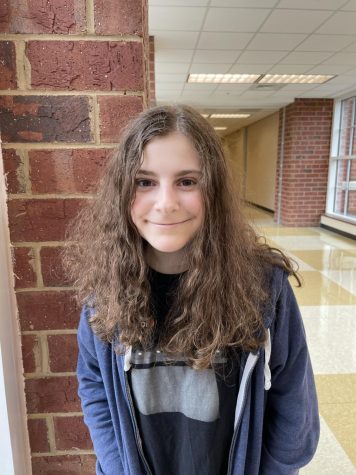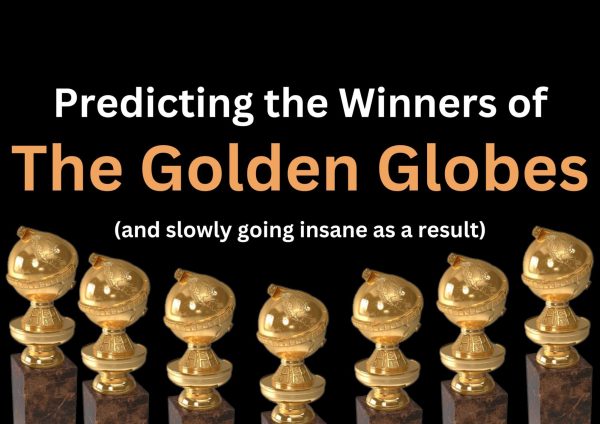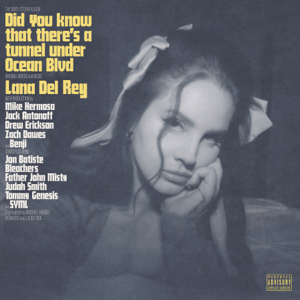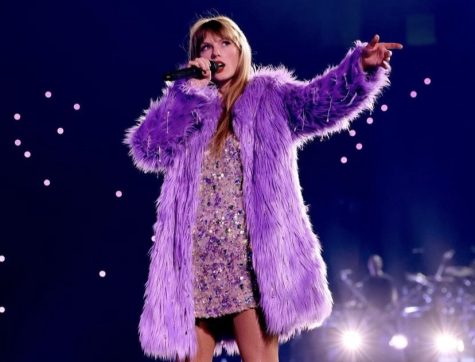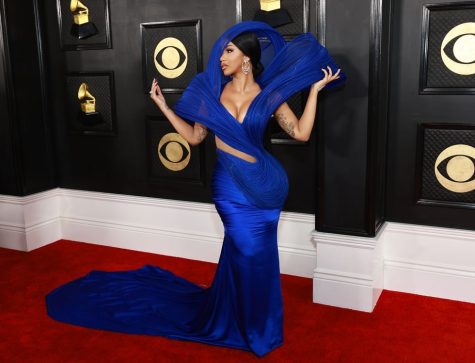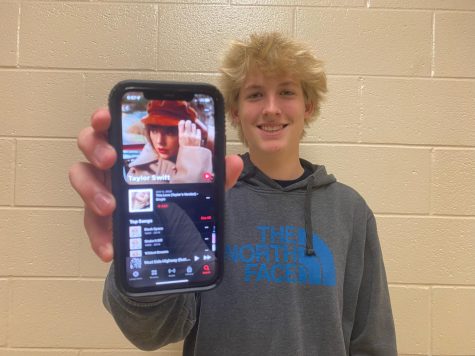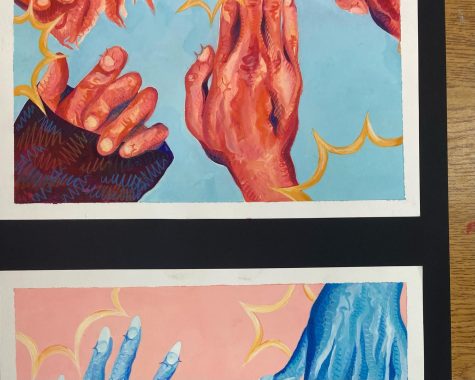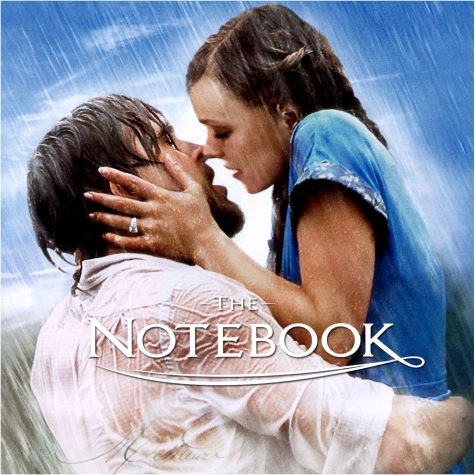“Dystopian Novels are So 1984:” School Books Versus Modern Young Adult Books
December 16, 2021
11:00 a.m. You’re in your English Literature class. You settle at your desk and pull out your device. You focus all your energy on the TEAMs home page, barely hearing your teacher say the dreaded words.
“We’re starting our ‘Macbeth’ unit, everyone,” your teacher says. Several groans emit from your surroundings. You find yourself groaning, too.
Many students and teachers have love-hate relationships with curriculum books. English teacher Christina Sheara said when she was in high school, she was “half-and-half” when it came to curriculum books; she enjoyed some, but certainly not all.
“I don’t like them,” sophomore Anna Claire Jacobi said. “You can’t choose books you want to read.”
However, there are plenty of similarities between curriculum books and books students read for fun. Those similarities are called tropes, and every single book in the world has them (excluding the dictionary).
Would you believe me if I told you “Macbeth” by William Shakespeare, a book about an ambitious tyrant taking the throne of Scotland and “The Seven Husbands of Evelyn Hugo” by Taylor Jenkins Reid, a book about an aging Hollywood star who decides to have her entire life documented in an interview, weren’t all that different?
Well, it’s the truth. Several other curriculum books and “for fun” young adult novels are like this, too.
Romeo & Juliet – Into the Heartless Wood
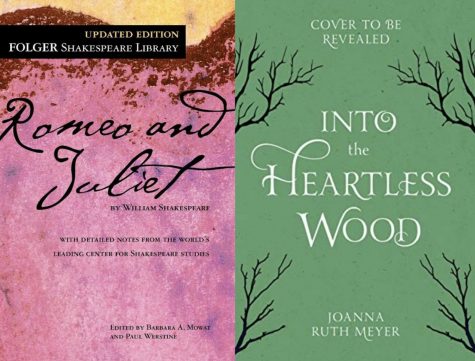
“Romeo & Juliet” by William Shakespeare is a timeless tragedy majority of students are forced to read some time or another. A more modern retelling of the classic play is “Into the Heartless Wood” by Joanna Ruth Meyer.
Both are books about forbidden romance. While Romeo Montague and Juliet Capulet are from rivalling families, Owen Merrick and a “tree siren” are from rivaling species.
If Romeo and Juliet’s relationship was to be discovered by their families, they would never be able to go near each other again. Their families would go to war. If Owen Merrick and the “tree siren” have their romance found out by their families, Owen could die at the hands of the siren’s “sisters.”
I love the “forbidden romance” trope because it is a quick way to add drama and stakes to any story – and we readers love drama.
“I like that students are into [forbidden romance],” said Sheara. “They can relate to it in a way.”
The Odyssey – The Song of Achilles
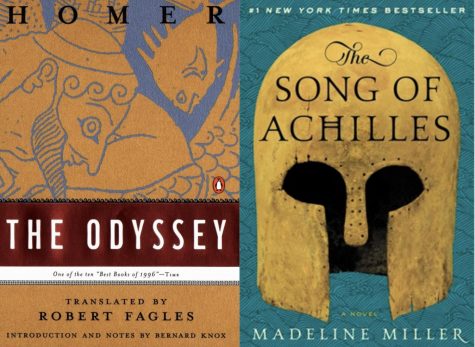
Another great read from ninth grade English class is “The Odyssey” by Homer. It takes place in the Bronze Age, after the timeline of “The Song of Achilles” by Madeline Miller. Achilles, who is obviously the main character of the latter, makes a cameo in “The Odyssey,” and “The Odyssey’s” main God, Odysseus appears in “The Song of Achilles.”
Not knowing a lot about Greek Mythology, I got very excited when I saw Odysseus in “The Song of Achilles” because his name was the only one I recognized (aside from Zeus, because that’s a given). I remember reading his name and thinking “I know him! I know him!” like an elf at Gimbels hearing Santa was coming.
I really enjoy when books take aspects or themes from Greek Mythology and apply them to the characters or plot.
Adding Greek Mythoi to books “gives them spice,” said Jacobi.
The Great Gatsby – The House in the Cerulean Sea
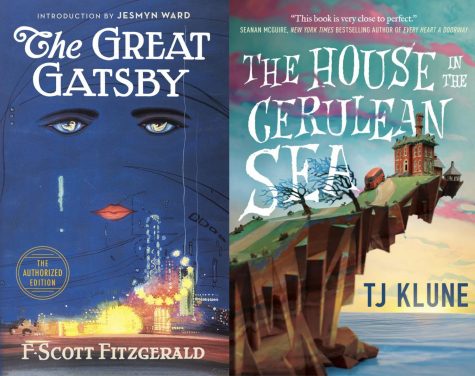
One of the main tropes in “The Great Gatsby” by F. Scott Fitzgerald is its use of color symbolism. Coincidentally, a main trope in TJ Klune’s “The House in the Cerulean Sea” is also this kind of symbolism.
In “The Great Gatsby,” yellow represents luxury and greed. In “The House in the Cerulean Sea,” blue represents happiness, a contrast to the grey of the protagonist’s world before he traveled closer to the ocean.
I loved this book, and the symbolism only made it more meaningful to me. Though I haven’t read “The Great Gatsby” yet, I expect it to be just as amazing as a read as Klune’s book.
Lord of the Flies – The Maze Runner
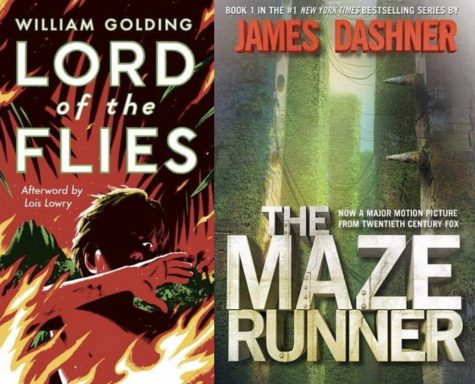
When comparing William Golding’s “Lord of the Flies” to more modern works, James Dashner’s “The Maze Runner” seems like a stretch. However, both books share something in common: the characters are stranded.
In “Lord of the Flies,” the protagonists are stuck on a deserted island with nothing. In “The Maze Runner,” the protagonists are stuck in the center of a maze and need to find a way out. There’s a problem, however: there are hungry monsters in the maze trying to catch the protagonists when they run.
Another reason why I like “The Maze Runner” and really want to read “Lord of the Flies” is the fact that the characters are around students’ ages.
“I think [Lord of the Flies] is my favorite because the characters were closest in age to us and because the characters were complex,” said Giuliana Meese, a sophomore. “As students, we read books about things like this happening to adults but not to children our own age. It’s kind of an eye opener.”
Liked, disliked, favored or despised, curriculum books are a major part of high school.
“They allow you to experience things you normally wouldn’t [in real life],” said Sheara.
Whether your next read is a curriculum novel, a textbook or a “for fun” book, there are similarities everywhere. If you’re looking for a book similar to a book you’ve read before, just keep digging. It’s all in the tropes.
